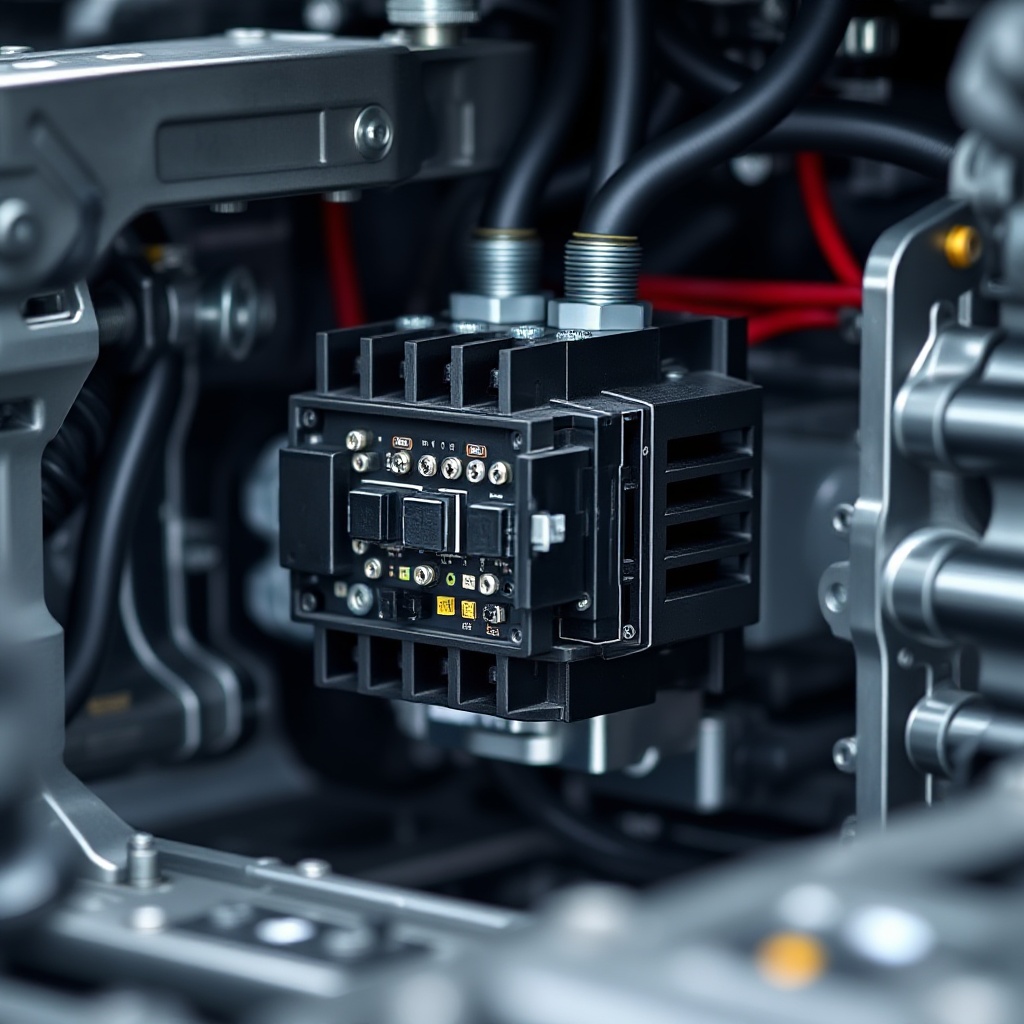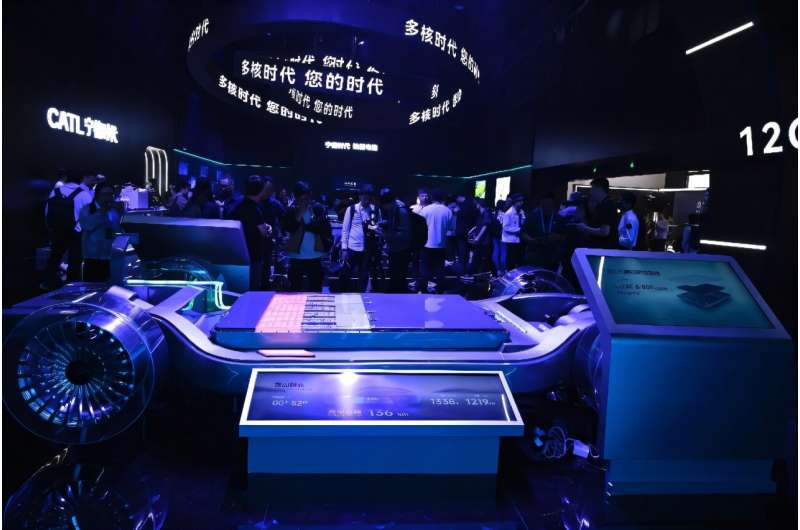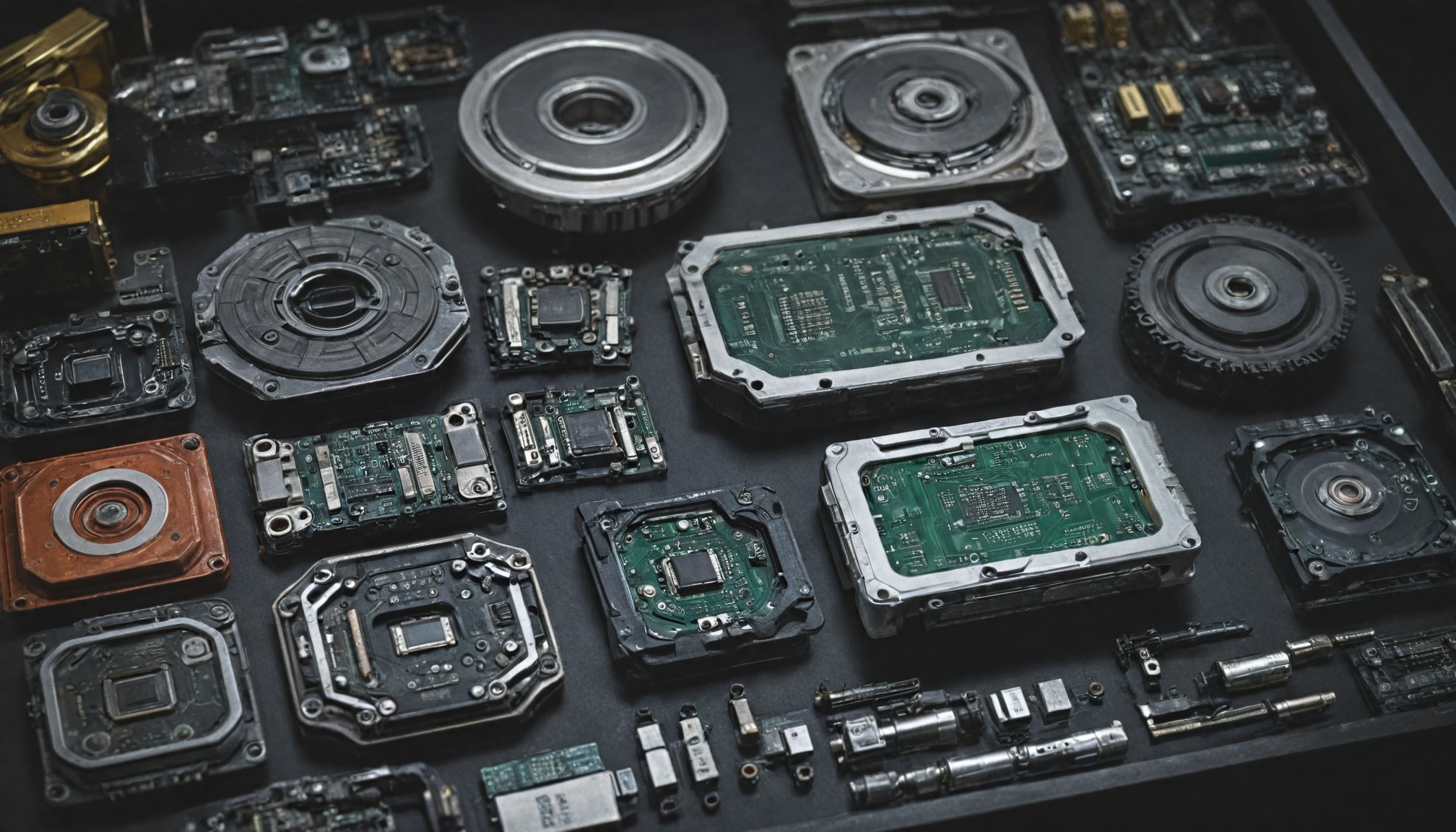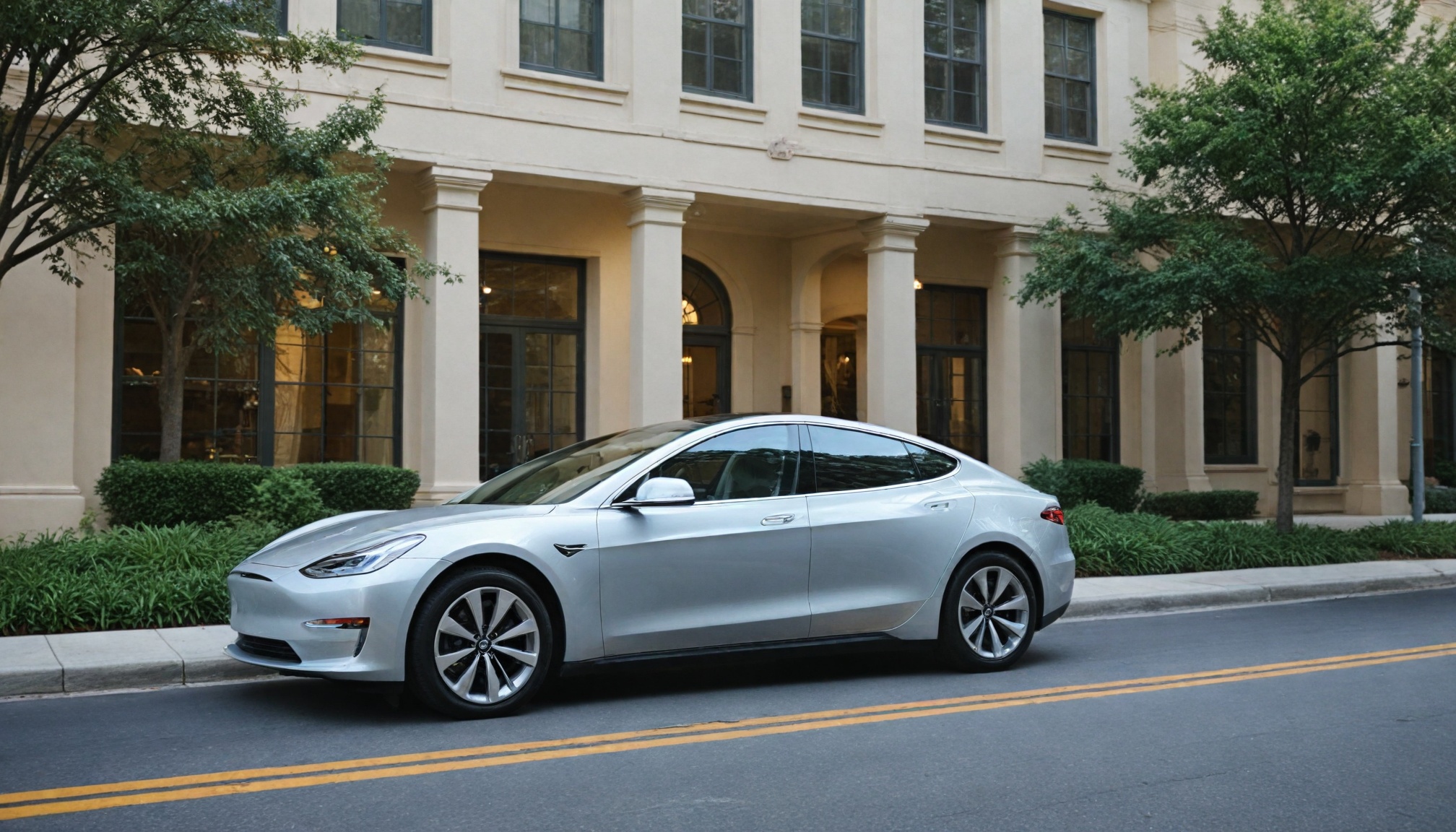
Solid-state contactors revolutionize EV design, offering 50% power loss reduction and 7-10% extended range, poised to dominate within five years.

Drivetech Partners
The electric vehicle industry is witnessing a revolutionary shift as solid-state contactor technology rapidly replaces traditional electromechanical solutions in modern EV designs. Industry experts predict that within just five years, these advanced semiconductor-based power control systems will become the dominant technology in electric vehicles, offering dramatic improvements in efficiency, safety, and overall vehicle performance.
Key Takeaways
Next-generation semiconductors like B-TRAN® technology reduce power losses by 50% or more compared to conventional switches, potentially extending EV range by 7-10%
Five global Tier 1 automotive suppliers are already testing and integrating solid-state contactors, signaling imminent large-scale adoption
Solid-state solutions offer ultra-fast switching speeds, eliminating dangerous arcing issues while enabling sophisticated safety features
The technology reduces component count by up to 50%, streamlining EV design and lowering manufacturing costs
With typical EVs using 5-8 contactors per vehicle and the global market growth accelerating, this represents a massive opportunity for advanced switch technology
The Rapid Shift to Solid-State Power Control in Electric Vehicles
A fundamental transformation is underway in how electric vehicles manage power distribution. Solid-state contactors – the critical components that control high-voltage and current flows throughout an EV – are quickly displacing traditional electromechanical versions. This shift isn't merely incremental; industry analysts project that within five years, solid-state solutions will become the predominant technology across the EV market.
The momentum behind this transition is evident in recent industry developments. Currently, five global Tier 1 automotive suppliers, including those serving major OEMs like Stellantis, are actively testing and integrating solid-state contactor solutions into their designs. This signals a market-wide acceptance that these advanced semiconductor technologies represent the future of EV power control.
For manufacturers and suppliers, the opportunity is substantial. Modern electric vehicles typically utilize 5-8 contactors per vehicle – devices that safely connect and disconnect high-voltage circuits throughout the powertrain. As global EV production continues its rapid ascent, the market for these critical components represents a significant growth opportunity for companies pioneering next-generation switch technology.
B-TRAN® Technology: A Game-Changer for EV Efficiency and Range

At the forefront of this transformation is B-TRAN® technology, a bidirectional semiconductor power switch that fundamentally reimagines how power flows through electric vehicles. Unlike conventional approaches that require multiple switches for bidirectional applications, B-TRAN® consolidates these functions into a single, highly efficient device.
The performance improvements are substantial. B-TRAN® delivers a 50% or greater reduction in power losses compared to conventional IGBTs or MOSFETs commonly used in today's EVs. This dramatic efficiency gain translates directly to extended vehicle range – potentially increasing driving distance by 7-10% through higher system efficiency alone.
Beyond efficiency, this technology enables significant design simplifications. By reducing component count by up to 50%, B-TRAN® allows for more streamlined EV powertrain designs with fewer parts, simplified thermal management, and lower overall costs. This consolidation of functionality represents a key advantage for automotive designers facing the complex challenges of electric vehicle development.
Safety Advances Through Next-Generation Semiconductor Design
The safety implications of solid-state contactor technology extend far beyond incremental improvements. These devices operate at switching speeds orders of magnitude faster than traditional electromechanical contactors, enabling near-instantaneous response to dangerous electrical conditions.
One of the most significant safety advances comes from the elimination of contact arcing – a common failure point in mechanical contactors that can lead to component damage, reduced reliability, and even fire risks. Solid-state solutions completely eliminate this issue through their fundamental design, significantly improving long-term reliability.
The integration of advanced electronics with these semiconductor switches enables sophisticated safety features previously impossible with mechanical systems, including:
Programmable current limits that can adapt to different operating conditions
Predictive maintenance capabilities that detect potential issues before they become critical
Sophisticated vehicle protection through integrated diagnostic capabilities
Ultra-precise control over power flow timing and characteristics
These capabilities don't just improve safety – they create the foundation for future autonomous vehicle systems that will require exceptionally reliable power management with advanced diagnostic capabilities.
The Cost and Reliability Advantages of Solid-State Solutions
The business case for solid-state contactors extends well beyond performance improvements. These devices offer compelling economic and reliability advantages that are driving their rapid adoption throughout the automotive supply chain.
Without moving parts, solid-state contactors eliminate the physical wear and maintenance needs that plague traditional mechanical solutions. This absence of mechanical components results in dramatically improved reliability and the elimination of routine maintenance requirements – a critical consideration for modern EVs expected to operate reliably for hundreds of thousands of miles.
The thermal advantages are equally significant. By generating substantially less heat during operation, solid-state contactors require fewer thermal management resources, reducing system complexity and further improving efficiency. This advantage becomes particularly important in the tightly packed component environments of modern EV powertrains.
From a cost perspective, these solutions offer a compelling value proposition. While delivering performance comparable to premium silicon carbide contactors, next-generation technologies like B-TRAN® can be implemented at significantly lower costs, making them attractive for mass-market adoption across various vehicle segments.
Growing Commercial Traction in the EV Supply Chain
The transition from technical promise to commercial reality is accelerating rapidly for solid-state contactor technology. Industry sources report requests for quotes on millions of SymCool® power modules – B-TRAN®-based solutions designed specifically for automotive applications – signaling imminent large-scale deployment.
This technology is advancing from pilot to commercial phases as automotive suppliers integrate it into their designs. Multiple major suppliers are now placing orders for evaluation units, a critical step in the qualification process that typically precedes production commitments.
The momentum is building across the automotive supply chain, with five global Tier 1 suppliers now actively involved in testing or integration. This level of engagement from top-tier suppliers – the companies that directly serve major automakers – demonstrates how quickly this technology is moving toward mainstream adoption.
The Global Context: EV Market Growth Accelerates Innovation
The rapid advancement of solid-state contactor technology is occurring against a backdrop of explosive growth in the global EV market. Projections indicate the market will reach 14.1 million units in 2023 – a 34% increase year-over-year – creating enormous demand for innovative power control solutions.
Regional adoption patterns highlight the global nature of this transition. Europe is expected to reach 31.1% EV market share by 2025, accelerating to 68.6% by 2030. Meanwhile, the US is projected to hit mass adoption around 2028, creating a massive market for advanced power control technology.
The competitive landscape for EV innovation continues to intensify across China, the US, and Europe. This global competition is driving faster integration of advanced components like solid-state contactors as manufacturers seek every possible advantage in efficiency, safety, and cost.
Comparing Solid-State vs. Electromechanical Contactors
To understand the magnitude of this technological shift, it's helpful to directly compare traditional electromechanical contactors with their solid-state replacements. Traditional mechanical contactors, while proven technology, suffer from fundamental limitations including physical wear, limited switching speeds, and dangerous contact arcing.
In contrast, solid-state solutions provide instantaneous switching – often measured in microseconds rather than milliseconds – enabling superior safety response times. This dramatic improvement in switching speed translates directly to enhanced protection for both vehicle systems and passengers.
Next-generation semiconductors enable more compact designs with significantly reduced thermal issues. The B-TRAN® technology specifically enables bidirectional power flow with single components versus multiple traditional switches, a critical advantage for modern EVs that frequently need to manage power in both directions – particularly for regenerative braking and potential vehicle-to-grid applications.
The reliability comparison is equally stark. While mechanical contactors degrade predictably with use, solid-state solutions maintain consistent performance throughout their operational life, eliminating a common failure point in EV electrical systems.
The Future of EV Infrastructure: Beyond Contactors
The implications of solid-state power control technology extend far beyond the vehicles themselves. These advanced semiconductor solutions are poised to transform the broader EV ecosystem, including charging infrastructure and grid integration.
Next-generation semiconductors are enabling vehicle-to-grid capabilities through efficient bidirectional power flow – a critical requirement for smart grid integration that allows EVs to serve as distributed energy resources. This functionality, difficult to implement reliably with mechanical contactors, becomes straightforward with solid-state technology.
Advanced diagnostics and programmability are creating the foundation for future autonomous vehicle safety systems. As vehicles become increasingly self-managing, the ability to precisely control, monitor, and diagnose power systems becomes critical – capabilities inherent to semiconductor-based power control.
Integration with battery management systems is improving overall EV performance and longevity. By coordinating closely with battery systems, solid-state contactors can help optimize charging profiles, extend battery life, and enhance safety – particularly important as battery technology continues its own rapid evolution.
As the electric vehicle revolution accelerates, the shift to solid-state power control represents more than an incremental improvement – it's a fundamental reimagining of how power flows through these increasingly sophisticated machines, enabling new capabilities while enhancing the core performance metrics of efficiency, safety, and reliability.
Sources
Ideal Power - B-TRAN® Technology
Power Semiconductors Weekly - Ideal Power Expands B-TRAN Adoption
Power Electronics News - B-TRAN: Ideal Power's Next-Gen Power Switching Technology






